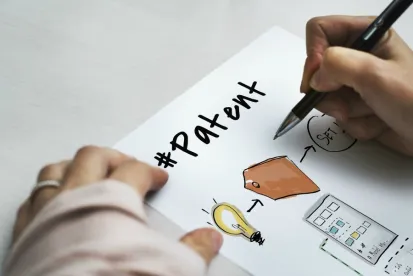On June 13, 2017, the Central District of California held that equitable estoppel barred the patent owner from prevailing on its patent infringement claim because, among other things, the patent owner failed to respond to the Defendant’s initial settlement proposal and delayed alleging patent infringement for six years. See Deckers Outdoor Corp. v. Romeo & Juliette, Inc., No. 2:15-cv-02812-ODW (PLAx), 2017 U.S. Dist. LEXIS 91683, at *2 (C.D. Cal. June 13, 2017). Further, despite the recent curtailment of laches as a defense to bar recovery of damages, see SCA Hygiene Prods. Aktiebolag v. First Quality Baby Prods., LLC, 137 S. Ct. 954 (2017), the Deckers court held that it may still be available as a bar to injunctive relief. Deckers Outdoors, 2017 U.S. Dist. LEXIS 91683, at *12 (citing SGA, 137 S. Ct. at 954).
Laches has long been available as a defense to charges of patent infringement to protect against “unreasonable, prejudicial delay in commencing suit.” SCA, 137 S. Ct. at 960 (citation omitted). The Patent Act further specifies that no recovery shall be had for any infringement committed more than six years prior to filing of the complaint or counterclaim for infringement of the action. 35 U.S.C. § 286. On March 21, 2017, the SCA Court determined that laches could not preclude a claim for damages incurred within the Patent Act’s six-year limitations period. SCA, 137 S. Ct. at 967. The Court went on to conclude that the doctrine of equitable estoppel provides protection against improper misleading action by patentees. Id.
Equitable estoppel requires proof that (1) “[t]he patentee, through misleading conduct, leads the alleged infringer to reasonably infer that the patentee does not intend to enforce its patent against the alleged infringer,” (2) “[t]he alleged infringer relies on that conduct,” and (3) “[d]ue to its reliance, the alleged infringer will be materially prejudiced if the patentee is allowed to proceed with its claim.” Deckers Outdoors, 2017 U.S. Dist. LEXIS 91683, at *6-7.
In Deckers, two design patents were at issue: U.S. Design Patent Nos. D582,650 (the ’650 patent) and D599,999 (the ’999 patent). Id. at *1. Deckers sued 15 defendants in a single action in 2008, alleging that each of them had boot designs that infringed the ’650 patent. Id. at *2. In 2009, Deckers sent a cease-and-desist letter to Defendant claiming that one of their boot designs infringed the ’650 patent as well. Id. at *2-3. In April 2009, one month after receiving the letter, Defendant offered to cease production of their boot design and pay Deckers $1,500, which was based on Defendant’s sale of the boot design to date. Id. at *3. Deckers never responded to the letter, and Defendant never ceased production of the boot. Id.
In 2010, Deckers filed a lawsuit against Defendant alleging trade dress infringement and dilution claims, but not alleging patent infringement. Id. In 2012, the parties settled the 2010 litigation. Id. The settlement required Defendant to make certain changes to its boot design, and, in exchange, Deckers agreed that any similarities between the two parties’ boot design would not be deemed to infringe on Deckers’ trade dress rights. Id. at *3-4. The agreement further included the statement that, “[n]othing herein shall be deemed a waiver of any intellectual property claims not asserted in the Litigation.” Id. at *4.
In 2015, Deckers filed another lawsuit alleging, among other things, that Defendant’s post-2010-litigation boot design infringed the ’650 patent. Id. Deckers also alleged that several of the Defendant’s boot designs infringed the ’999 patent. Id. In response, Defendant argued that Deckers’ infringement claims were barred by equitable estoppel and laches. Id. at *5.
The court first determined that Defendant had adequately established the defense of equitable estoppel based on the ’650 patent because Deckers’ conduct was “egregiously” misleading. Id. at *7. In particular, the court concluded that, despite an ongoing and litigious relationship between Deckers and Defendant, Deckers failed to assert the patent infringement claims for nearly six years after they sent the 2009 cease-and-desist letter. Id. at *8. Further, Deckers never added Defendant to the 2008 suit, nor did they address any patent infringement claims in the 2010 litigation that concerned the very same boot. Id. Even more, the settlement agreement for the 2010 litigation provided for the continued sale of Defendant’s boot design, albeit with modifications. Id. Finally, three years passed between the end of the 2010 litigation and the filing of the patent infringement suit. Id. In view of these facts, and despite the clause in the settlement agreement that carved out unasserted intellectual property claims, the court found that a reasonable fact finder would conclude that Deckers had led Defendant to believe it no longer intended to assert the ’650 patent. Id. The court also determined that the defendant expanded its manufacture and sales of the accused boots after Deckers’ misleading conduct, thus satisfying the second and third prongs of the equitable estoppel test. Id. at *10-12.
The court then addressed Deckers’ allegation that several of the Defendant’s boot designs infringed the ’999 patent. Id. at *15. Again, the Defendant argued the defenses of equitable estoppel and laches. Id. The court went through the analysis for equitable estoppel, but ultimately concluded that genuine issues of material fact remained, which precluded summary judgment. Id. at pg. *15-18. Regarding laches, the court stated that although the Supreme Court held that laches does not bar recovery of damages where the patentee brings suit within the limitations period, laches may still bar injunctive relief. Id. at *18. Accordingly, the court found that all material facts, including those giving rise to laches, should be considered in determining whether to grant or deny an injunction. Id. at *19 (citation omitted). Those factors include determining whether: (1) the patentee has suffered an irreparable injury; (2) remedies available at law, such as monetary damages, are inadequate to compensate for that injury; (3) considering the balance of hardships between the plaintiff and defendant, a remedy in equity is warranted; and (4) the public interest would not be disserved by a permanent injunction.” Id. The court found that the Defendant had not addressed most of these factors, and therefore precluded summary judgment based on its laches claim. Id. at *18-19.
Based on the court’s analysis in Deckers, it appears that the equitable estoppel defense can pick up some of the slack left behind from the limitation the Supreme Court placed on the laches defense in SCA. For example, the Deckers court placed emphasis on the relationship of the parties, communication (or lack thereof) between the parties, previous litigation of the same product, and Deckers’ delay in alleging patent infringement as evidence of Deckers’ misleading conduct. Accordingly, although laches may not apply within the six-year limitation of the Patent Act, equitable estoppel may. Further, this case demonstrates that at least one court maintains laches as a bar to injunctive relief, and therefore it should be considered in formulating a defense strategy.





 />i
/>i

